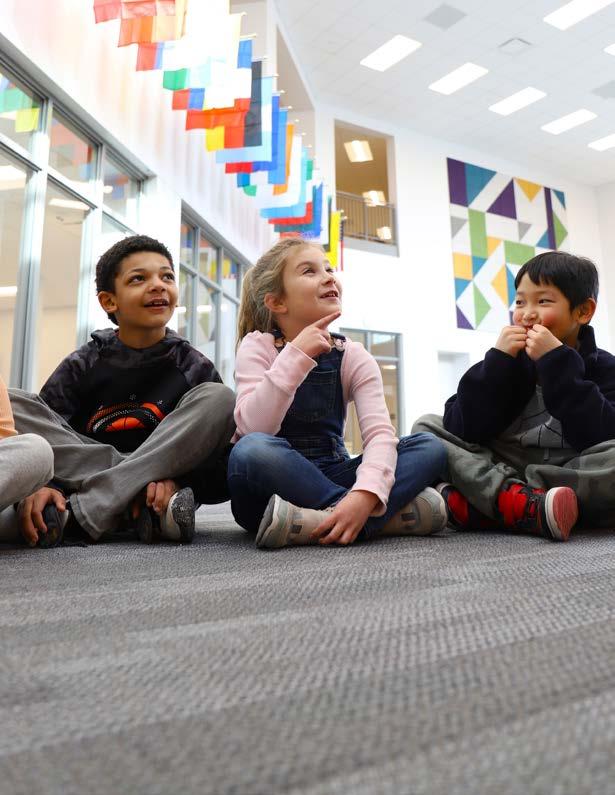
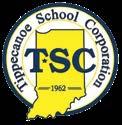



The TSC is excited to reconnect with you through this newsletter, which serves as both an annual report and a way to share the successes of our students and staff. We are proud to serve our entire community. Whether or not you have a child in our schools, your support helps shape the educational experiences that prepare our students for the future.
We continue to invest in our schools to support our growing enrollment and provide the best opportunities in academics, arts, athletics and extracurricular activities. The new Klondike Middle School and expansion at Klondike Elementary are just two examples of our commitment to meeting student needs.
Inside, you will meet some of our outstanding educators and see the innovative programs made possible through partnerships with Purdue, Ivy Tech, local businesses and community organizations.
Thank you for your ongoing support as we pursue excellence one student at a time.
Dr. Scott Hanback, TSC Superintendent
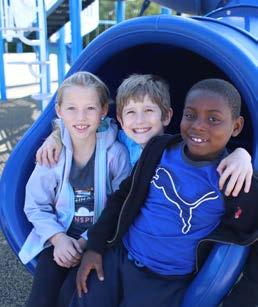
Lauren Ahlersmeyer Battle Ground, Kindergarten
Lisa Isenbarger Burnett Creek, Fourth Grade
Tiffani Earley Cole, Kindergarten
Julie Doan Baumann Dayton, Music
Kristin Hodgen Hershey, Special Education
Beth White Klondike, ENL
William Fusiek Mayflower Mill, Fifth Grade
Kelsey Greer Mintonye, Fifth Grade
Molly Scheel Wea Ridge, Second Grade
Lisa Merryman Woodland, Kindergarten
Stephanie Lange Wyandotte, Fourth Grade
TSC honors these staff members for their years of service to our corporation and students.
40 Year
Sandra Fountain Mintonye Elementary, Fourth Grade
30 Year
Reasha Jacobs Battle Ground Elementary, Aide
Kristine Weaver Klondike Elementary, Second Grade
Rebecca Combs Battle Ground, English
Joseph Margraf East Tipp, Mathematics
Jody Vanderwielen Klondike, English
Milt Anderson Southwestern, Art
Jessica Oertel Wainwright, PE/Health
Mary Eisert Wea Ridge, English
Kristen Trella Harrison, English
Megan Evans McCutcheon, Mathematics
TSC salutes our retiring staff members. We appreciate their dedicated service and commitment to our schools. Scan the QR code with your phone to watch a video honoring our retirees.


Greater Lafayette Commerce annually presents the Golden Apple Awards to recognize excellent educators with passion and dedication to serving children in our community. The following teachers are being celebrated with Golden Apple Awards for 2025.
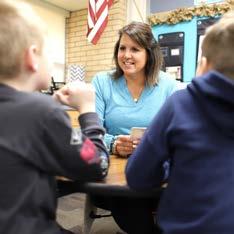
“I’ve always known I wanted to be a teacher. Being able to connect with students and use that relationship to provide what they need academically makes for the best job!”
Ellen DeFreese - Third Grade, Cole Elementary School
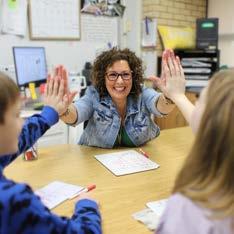
“That ‘aha’ moment—when their eyes light up, a smile spreads across their face, and you know they truly understand—that’s the most rewarding part of teaching.”
Angela Marks - Third Grade, Cole Elementary School
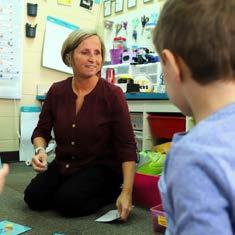
“I hope my students remember they’re always in my heart, even after they leave my class. I hope they felt loved, safe and inspired to love learning through our time together.”
Carolyn Howard - Kindergarten, Dayton Elementary School
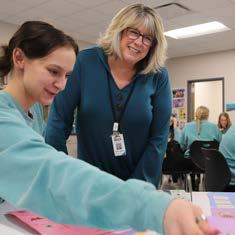
“I love seeing my students thrive in the community. Watching them flourish and knowing I’ve made a positive difference in their lives is truly rewarding. Teaching gives me a deep sense of purpose, and each day is an opportunity to contribute to something greater than myself.”
Diann
Vernon - Education Professions, GLCA/TOA
Nominate your favorite teacher for a Golden Apple Award
Nominate an educator who has made a positive impact on your student by May 1. Scan the QR code for the nomination form and to view videos of our current honorees.

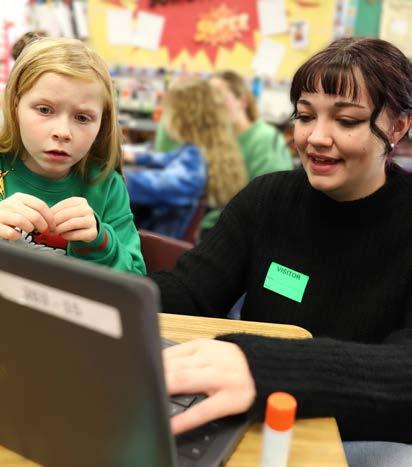
Some McCutcheon High School students are trying to make waves by changing the image of what a computer programmer looks like. Computer Science (CS) Ambassadors Kayann Baker and Kenna Wallace move from desk to desk at Mintonye Elementary School helping students navigate the puzzles and challenges of coding. Laughter and the occasional “aha!” exclamations fill the room as the third graders begin to grasp the basics of programming with the guidance of their high school mentors.
This visit to Mintonye Elementary School is part of the CS Ambassadors’ mission to share their excitement for computer science and inspire others. They visit classrooms, host informational tables at lunch and lead the Women in STEM Club at McCutcheon.
“Empowering more women to pursue computer science is the reason I became an ambassador,” says Kayann, a second-year ambassador. “Computer science is a male-dominated field—only 18% of computer science degree earners are women. By encouraging more women to explore this area, we can help increase that number and move closer to gender equality.”
Kenna adds, “My father is a programmer, so I grew up around it. Through this role, I hope we can increase interest and build confidence for girls to consider going into this male-dominated field.”
During the coding activity, Kayann, Kenna, and several other Women in STEM Club members introduced students to coding through a pixel art project. Using specific combinations of characters, letters and numbers, students created colorful designs while learning foundational programming concepts.
“It was so fun,” says student Addison Walters. “It was like learning a secret language.”
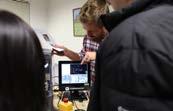
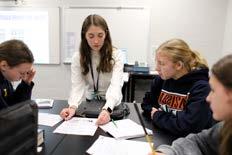
Classmate Naevia Sieber says once she got the flow of it, it made sense: “They taught me a lot. I like computers even more now!”
The benefits of coding go beyond the screen. Third grade teacher Barb Tilley says the skills students learn while coding transfer to other aspects of the school day: “Coding promotes problem solving, critical thinking, collaboration and creativity—all skills that students use every day.”
“In third grade, I want my girls to know that there are no limits for them,” says Tilley. “They can help shape the growing tech industry if they choose to.”
McCutcheon engineering and technology teacher Zach McKeever praised the ambassadors’ work. “There are a significant number of students who miss the opportunity to take STEM classes because of the gender gap in these courses. Students like Kayann and Kenna are helping break down these barriers and misconceptions. Hopefully, they’ll create a network of students with shared interests,” he said.
Thanks to the leadership of Kayann and Kenna, students like Addison and Naevia are discovering the joy of coding and building confidence to explore a field once considered out of reach.
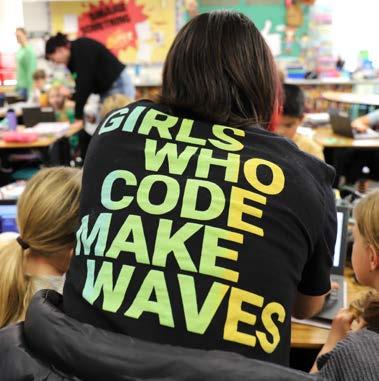
“Computers aren’t just for boys anymore!” says Naevia, smiling.
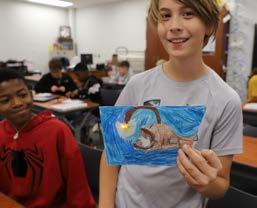
The Tippecanoe School Corporation is introducing middle and high school students to microelectronics as part of a regional workforce development initiative, aligning with SK hynix’s plans to build a microchip factory in the Purdue Research Park. Several TSC teachers participated in a summer workshop at Purdue University and have brought hands-on learning opportunities back to their classrooms.
At Klondike Middle School, students explored microchip manufacturing, circuitry, coding and logic gates. Sixth grader Clella Berger says, “I learned so much about microelectronics, including how electricity flows, how to code and how to problem-solve.” At East Tipp Middle School, students created interactive projects using “micro:bit” sensors, including a design where an anglerfish’s fin lights up.
High school students tackled more advanced projects like designing and soldering printed circuit boards for a digital dice roller. “Our board turned out really well,” says McCutcheon sophomore Jersey Troxell. “We learned how to solder and work together as a team.” The experience is inspiring students to consider future STEM careers.
ONE STUDENT AT A TIME
The new Klondike Middle School opened its doors in October 2024, welcoming students into a modern, spacious learning environment. From fine-tuning melodies in the band room to conducting experiments in state-of-the-art science labs, students are embracing the benefits of their new school.
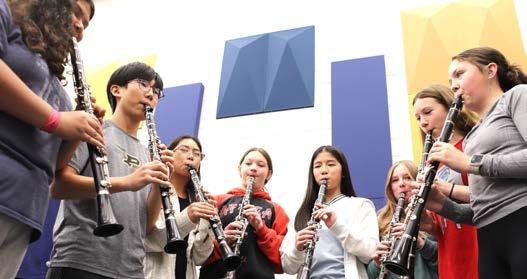
“Let’s take it from the top,” says band director Jason Caudill as he guides his eighth grade band students through a song for an upcoming concert.
In the new, state-of-the-art band room, students can feel and hear the difference. The space, featuring improved acoustics, enhanced lighting, ample instrument storage space and multiple practice rooms, is designed to foster their growth as musicians and accommodate the increasing popularity of the music program.
Liliana Zywicki, a baritone saxophone player in eighth grade, appreciates the increased space, noting that students are no longer crowded together when tuning their instruments.
“I think it’s helping us to be more organized,” says Lilianna. “It’s easier for concert and jazz band members to locate everything so we spend more time playing.” Trumpet player Oliver Hampton, an eighth grader, says the new band room is helping students work together and learn more: “We are able to do extra stuff that hasn’t been available for years, like playing Christmas songs during the holidays.”
“The new band room lets us do more, and do it better.” -Oliver Hampton, eighth grade
“One of the best aspects is the improved ability to live stream and have meetings with the composers of our pieces,” says Caudill. “This gives us the ability for students to rehearse with a composer and gain valuable feedback when hosting a composer isn’t feasible.”
“Read your procedures. Develop your hypothesis,” calls out teacher Samantha Church as her students begin a new lab activity. She says she is thrilled with how the school’s science rooms are enhancing hands-on learning. With more space, modern equipment and direct access to outdoor learning environments, students now have greater opportunities to engage in scientific exploration.
“We have so much more storage space for materials, and because the room is larger than before, our lab spaces have much greater potential,” Church says. “Now every student has a seat at a lab counter and a regular table without having to shift furniture around.”
Students are already experiencing the benefits. “The water-cycle lab for our weather and climate lesson required a lot of back-and-forth movement between lab tables,” says eighth grader Hannah Jung. “The steel-wool lab for our chemistry unit involved several materials—like steel wool, vinegar, brine and vegetable oil—and having extra table space was a huge help.”
The enhancements extend beyond traditional science experiments. “The new classrooms are very useful to us from a robotics perspective,” says eighth grader Corban Zalewski. “Instead of meeting in a vacant classroom, we are able to meet in the science room and use the collaborative spaces with our robotics teammates. This has been a huge blessing because we now have a lot more access to things like counters, test space and storage.”
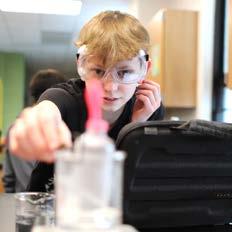
As students and staff settle into their new surroundings, the energy at Klondike Middle School continues to grow. “The whole school is a ton of fun,” says Corban. “The gyms are amazing; the band room is outstanding and the science rooms are incredible.”
“Wow, look at that!” says Cruze Rowlison, a first grader getting his first look at the new Klondike Elementary School media center in February.
As the students step into their new classroom for the first time, they rush to the floor-to-ceiling windows to take in the view and marvel at the natural light that brightens the space. “This is so cool,” exclaims Audrey Phillips.
The excitement lingers as Susan Scanlon’s first graders settle in.
The new classrooms, grouped into collaborative neighborhoods, provide an engaging setting for young learners. “These areas foster teamwork and adaptable learning spaces to support the diverse needs of our students,” said Principal Scott Peters. “Students have room to work together, engage in small-group activities and receive individual support, as needed.”
The school’s media center is a highlight. Once tucked away in the back of the building, it is now the focal point, visible from both floors. Flags representing the students’ cultural backgrounds hang in the media center, a welcoming and inclusive space for all.
Other new features include a kitchen for onsite meal preparation, a secure entrance and a redesigned traffic flow that separates car riders and bus traffic.
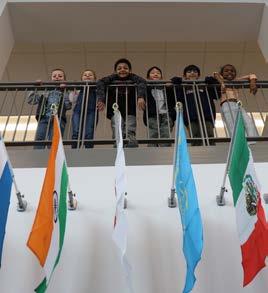
“The kids love it,” Scanlon says. “They are eager to come in each day and explore their new classrooms and make it their own. This space truly supports their enthusiasm for learning.”
Using part of a yellow foam swim noodle for the body, Hershey Elementary School third grader Shade Erwin brought “Gary” to life. “On the front of my monster, I put one eye in the middle and used a blue pompom to make a nose,” says Shade. “On the back, I added some broken toothpicks to create scary eyes and scary teeth.”
With parents joining students during a special evening of STEM fun in October in the Hershey gym, Purdue students from the College of Education guided participants building monsters along with several other activities where families explored the wonders of science, technology, engineering and math (STEM) together. Students excitedly led their parents from one station to another around the gym.
Building a “tower of terror” was another popular choice. The challenge: create the tallest tower with marshmallows and toothpicks that would remain stable without falling over.
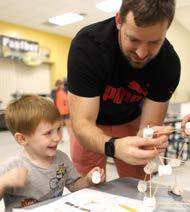
Working together, Misty Gretencord and her daughter, Jacinta, built an impressive structure: “We were both amazed because it was no easy task considering the consistency of the marshmallows and the limited number of toothpicks,” Ms. Gretencord says.
“The event was great fun,” says parent Jennifer Erwin. “I highly value hands-on learning, which was the focus of the evening. Often that’s the best way for young people—and grown-ups—to learn and experience the world.”
Erwin left the event with her arms full, carrying a recipe to make slime and her tired third grade son holding onto “Gary.”
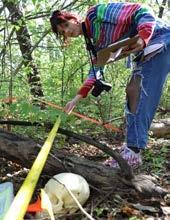
Under a canopy of leaves, biology students equipped with notepads, measuring tapes and cameras, gathered around an area roped off with yellow caution tape. They were in a wooded area near Harrison High School to solve a fictitious crime, stepping into the shoes of forensic investigators.
Each team examined the mock crime scene, carefully documenting every clue they encountered including bones hidden among the fallen leaves, a bloodstained shirt and bullet casings.
Senior Lola Howe says that the fall semester activity underscores the importance of teamwork in forensics: “While some were packaging information, others were measuring the evidence. A couple of us were taking pictures and drawing the crime scene.”
Junior Thomas Frosch notes that each item seemed to reveal a different layer of the story. “The finding of a bullet casing, yet not a gun, made murder the more likely scenario,” says Thomas. “The final ‘nail in the coffin’ was the presence of cocaine. My main theory, based on the evidence gathered, is that a drug deal went wrong.”
Teacher Melissa Keown says the CSI unit of her forensic science class offers students a unique chance to put classroom concepts into action. “It’s a great way for them to practice what they’ve learned about collecting and processing evidence,” Keown explains. “They’re learning the importance of precision and teamwork—skills that are critical in forensic science.”
The activity also sparked interest in forensics among students. “I had never thought about doing anything like forensics until this class,” Lola shared. “I’m now considering becoming a CSI agent or a forensic entomologist.”
‘Woodland
“Eeeew, look at this!” At first, some students in Joanne Sprunger’s second grade classroom at Woodland Elementary School hesitated as they cautiously poked at the owl pellets in front of them. But with a little encouragement from their teacher, curiosity soon took over. “I think it’s a beak!” one student exclaimed, using a toothpick to carefully explore the clump of fur and bones, his initial hesitation replaced by fascination.
The dissection is part of a unit on food chains and ecosystems, bringing learning to life for the young scientists. Armed with a paper plate, magnifying glass, toothpicks and a boneidentification chart, students eagerly uncover the mysteries hidden within owl pellets—what owls regurgitate after digesting the rest of their food.
“At first I thought it was hard to do because I did not want to break the bones as I was taking apart the owl pellet,” says student Mackynzie Calvin. “It was really cool to see all the different bones—and even a few skulls— from the animals the owl ate.”
Classmate Logan Rife says his favorite part was using the scientific tools like the microscope to examine the bones. “There was still some fur on them,” says Logan. “It was fun to be a scientist hunting for bones!”
“It was so awesome to find so many bones in one little pellet. I can’t wait to do this again!”
-Zayden Cain, second grade
Thanks to a grant from the Lafayette Kiwanis Club, more students at Woodland will have the opportunity to enjoy this hands-on activity. “The goal is to make learning fun and memorable while teaching about predator-prey relationships,” Sprunger says. “It was also a great way for students to connect with our school mascot— the Woodland Owls.”
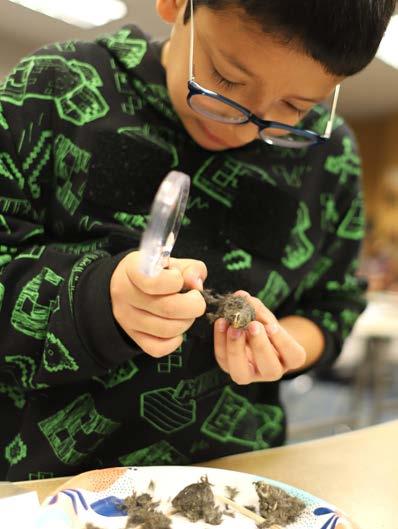
ONE S TUDENT AT A TIME
“Two minutes, you have two minutes,” calls FACS (Family and Consumer Sciences) Teacher Dana Crum as she circles the kitchen lab. The room buzzes with energy as students slice, dice and grill in a race against the clock. This is East Tipp Middle School’s Chopped competition, an annual student cooking contest inspired by the Food Network TV show, “Chopped.”
“What could you be washing, drying or putting away?” Crum reminds her students. “Keep your kitchen clean as you go.”
This moment is the culmination of weeks of lessons and hands-on labs focused on food preparation and kitchen safety. The team competition begins with the unveiling of the three ingredients inside each team’s basket: ground beef, cauliflower and sour cream. The students have one day to plan their culinary creations and another day for food prep. Now, it’s showtime.
“Chopped is a great opportunity to be creative and have some fun in the kitchen,” says Crum. “I want my students to be resourceful and to think on their feet. I hope they can learn to provide nutritious and interesting meals, and learn that it is okay to take some risks, possibly fail and just keep trying.”
Eighth grader Kassandra Huizar and her team presented each judge with a plate: a toasted-bun smash burger topped with a fried egg, accompanied by a side of deepfried cauliflower and sour cream dip.
“It was a little bit nerve-wracking, but wasn’t too scary because the judges are our principal and teachers who we already know and communicate with every day,” says Kassandra.
Team members felt confident as the panel of judges began to sample their food.
“There were a lot of smiles on their faces,” Lillianna Jaeger says. “They were asking a lot of questions, so I think they really liked it.”
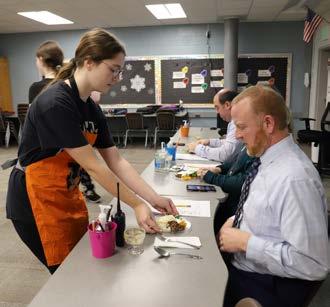
“I think our food turned out great,” says Issac Clifford.
“I think we learned to be more patient with each other and trust each other,” says Jack Marcotte.
Teamwork and patience pay off for Kassandra and her crew. The judges declare them the winners of the fall semester Chopped competition. However, these team members won’t be hanging up their aprons just yet. To have their names added to the Wall of Chopped Champions in the kitchen lab, they will need to compete against the spring-semester winners later this year.
The excitement builds as students look forward to the ultimate culinary throwdown.
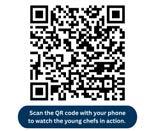
“Hot, ready and delicious” and “the best I’ve ever had.” That’s how sixth graders describe the taste of their first cooking assignment in Family and Consumer Sciences (FACS) class at Southwestern Middle School.
The first recipe? Eggs in a frame. Students started by buttering slices of bread and using a cookie cutter to create a hole in the center. “You cook the bread in a skillet, then crack the egg open and drop it into the hole,” explains student Marlon Gutierrez Cisneros. “When the eggs are done, add seasoning, and for me, add hot sauce.”
The assignment is an introduction to culinary arts designed to teach students practical cooking skills. Students also learn to prepare tacos, smoothies, vegetarian ramen, biscuits and chocolate chip cookies. “The secret to making the perfect eggs in a frame is having all your supplies ready and making sure the eggs are cooked all the way,” says student Hatley Brown.
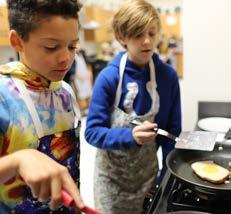
Marlon suggests going for accuracy and don’t rush it: “Remember, slow and steady wins the race in cooking. Don’t rush it or try to assume you’re done.”
For both Marlon and Hatley, this was the first time cooking eggs on their own. Now they are eager to keep making new dishes.
“I plan on cooking more now,” says Hatley. “I had so much fun cooking.”
“It’s fun and something I can use to burn time and fill my stomach,” adds Marlon. “Most importantly, it helps you learn helpful skills.”
Teacher Kelly McKee says the class is about more than just making food—it’s about building confidence and independence. “When students leave my class, they’ve not only learned basic cooking techniques, but also life skills they’ll carry with them for years to come.”
Sixth grade students gathered behind Battle Ground Middle School where technology teacher Joshua Young has separated two picnic tables by 12 inches to create the “Tomahawk Gap.” This gap is where student-built bridges, crafted from plastic straws and masking tape, face the ultimate test.
Student Hannah Barnes watched anxiously as a teammate carefully added sand to a small bucket suspended from the bottom of their bridge. At 2,784 grams, the bridge began to buckle. “The middle didn’t break, but the sides didn’t have enough tape,” Hannah says reflecting on her team’s design.
“Our bridge was bending really far and twisting really badly,” says fellow student Doc Brettnacher, whose team’s design held up under 3,412 grams of sand—the most in his class.
“This was a fun assignment,” says Doc. “I learned a lot about the design process, all of the steps, and coming up with some examples in your everyday life. I also learned that triangles are the strongest geometric shape.”
This hands-on challenge proved to be more than a test of strength, but an unforgettable lesson in design, engineering and teamwork. “I learned that you have to work together and not try to do it by yourself,” says Hannah. “I was surprised how well our bridge did. We used a lot of teamwork.”
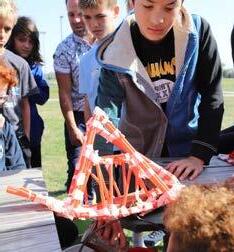
“Remember to keep one foot on the ladder,” shouts Sergeant Dave Rose of the Lafayette Fire Department as he steadies himself atop a roof prop, a training tool firefighters use to practice cutting, ventilation and other rooftop firefighting skills. His chain saw tears into a wooden pallet outside the Greater Lafayette Career Academy (GLCA) as he demonstrates the proper techniques used in vertical roof ventilation—a crucial skill in fire safety and rescue operations.
The GLCA is a career and technical education center that provides local high school students with hands-on training in a variety of fields, including healthcare, engineering and public safety. Through its Fire and Rescue program, students can earn four Indiana state fire certifications, as well as additional experience under the guidance of active firefighters.
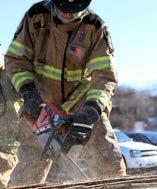
GLCA instructor Tyler Hershman explains that cutting a hole in the roof allows heat and gas to escape, improving visibility for the firefighters working inside to extinguish the fire or find people in danger.
“It’s
an adrenaline rush,”
-Seth Leon-Stotler, McCutcheon senior
“You have to start from the side farthest away from you, and work your way toward you. That way you’re not leaning into the hole with the potential of falling in.”
For Harrison High School junior Allison Lewis, the program is both a personal and professional calling. “I enrolled in Fire and Rescue at the GLCA because I have family members who are firefighters and I am inspired by the work they are doing,” she shares. “The GLCA is more hands-on learning, and I am very interested in that.”
Allison describes how the experience has deepened her passion for the field. “This program has made me want to be a firefighter or a first responder even more than I did coming into it. Being able to learn from active firefighters and hear their stories is very inspiring to me.”
The chain saw roars as students take turns on the roof prop cutting into the wooden pallets. The program has also solidified Seth’s career aspirations. “Within the first week, I knew I wanted to be a firefighter,” he says. “Learning what it’s all about, knowing I’ll be helping people, and realizing it’s a great career—it is perfect for me.”
Fire trucks with lights flashing and sirens blaring bring traffic to a halt on Main Street in Battle Ground as excited students wave from inside the fire trucks, making their grand arrival at Battle Ground Intermediate and Elementary Schools on October 11.
“It was so exciting,” says fourth grader Raylee Rettig. “We waved at everyone—people in their cars and people walking down the street.”
“Each year, about 30 students are selected by their teachers to have breakfast with firefighters at the Tippecanoe Township Volunteer Fire Department—a tradition that has continued for more than 20 years.”
After enjoying pancakes, sausage, donuts and orange juice, fifth grader Jericho Clopton tried on a firefighter’s gear. With some help, he slipped into the large boots and oversized jacket: “The boots were so big and the helmet was really heavy. It kept falling down the right side of my head.”
After breakfast and interacting with the firefighters, they all hop into the cab of a fire truck to be taken to school. After all the students arrived at school, the firefighters shared important safety messages with students and gave the students a glimpse of what their job is like. “It took three of us to hold on to the fire hose,” Jericho says. “It was cool to see how far we could shoot the water, and you could feel the cold water rushing through the hose.”
Although the day was full of fun activities, Raylee left with a serious safety reminder: “Make sure you have a fire escape plan, whether you’re at school or at home.”

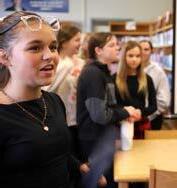
Middle school can be a challenging time for students as they navigate peer pressure, social media and finding their place. At Wainwright Middle School, the EmpowHer group is helping girls face these challenges with confidence, kindness and leadership. Building on the She Leads program at Cole Elementary School, student support specialist Dawn Lamb leads the group’s talks, providing students with tools to overcome common middle school struggles and empowering them to support one another.
“I joined this group because it is a great opportunity to build confidence in myself and other girls in my grade,” says seventh grader Isabella Wykoff. “We talk about insecurities and how to reframe them into good traits.”
Classmate Lynlee Peters says the group has exceeded her expectations. “To be totally honest, I joined the group thinking we would just sit there and talk about our feelings. It was nothing like I imagined,” Lynlee says. “We do activities and have fun with each other. Mrs. Lamb does a terrific job of teaching us about rumors, gossip and how to avoid drama.”
EmpowHer not only addresses drama, peer pressure and social media, but provides a safe space for girls to grow. “We’ve noticed the girls in the program are more self-aware and confident,” says Lamb. “There are also fewer social media issues and when there are conflicts, the girls are better equipped to talk through the issues with each other.”
Lynlee says the group has had a positive impact on all the girls involved. “When Mrs. Lamb gave us a challenge to not gossip for one week, all of us went out and really held ourselves accountable. I love seeing my peers be better versions of themselves, but most of all I love that this group makes me a better version of myself.”
“Ring around the Rosie, pocket full of posey,” echoes across the playground at Cole Elementary School as kindergartners form a circle holding hands. Joining them are fifth grade girls from the She Leads program, guided by school counselor Hillary Wycoff.
An extension of the Cole Professional Academy, She Leads helps young girls build leadership skills. Guest speakers visit throughout the year to teach students how to lead with pride, kindness, respect and confidence.
“I want them to learn about different careers they may not have considered before,” says Wycoff. “Even more, I want them to see how these women use basic leadership skills to make a difference in their communities. These are skills the girls can practice in their own lives.”
Fifth grader Clara Gearhart says the program has had a big impact on her. “What we’re learning will help me later on—it’ll open doors,” she shares. “We’ve learned it’s okay not to fit the mold. Be yourself.”
“We also learned how to work in groups and approach situations when someone isn’t doing their part,” adds Clara.
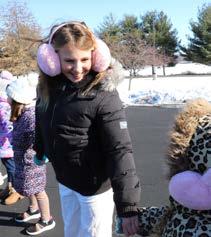
Kinsley Beck says She Leads has brought her closer to her peers and shown her the importance of collaboration: “It’s about respecting others and sharing ideas. Projects turn out better when everyone contributes.”
Back on the playground, the group chants “ashes, ashes, we all fall down!” Thanks to She Leads, students like Clara and Kinsley will be there to help them back up—and lead the way forward.
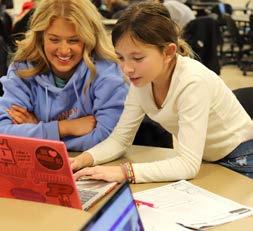
Every Thursday after school, about 30 students in first through fifth grades at Mayflower Mill Elementary School board the Boiler Bus to Purdue University to participate in College Mentors for Kids. It’s a program that connects local students with college student volunteers. Through one-on-one mentorship and engaging campus activities, the program aims to instill students with confidence and curiosity as they glimpse college life.
“It’s fun, and we get to do all kinds of cool activities,” says fifth grader Kaydince Rice. “My favorite activity was with the Girls Who Code Club. We were creating a game and adding funny animal sounds to it.”
“We hope our little buddies will gain a passion for lifelong learning and hopefully going to college,” says Brandon Kinaan, president of the Purdue mentors chapter. Mayflower Mill is one of five local schools participating in the program.
Kaydince says her experience has made her more interested in going to college to pursue her dream of becoming a scientist: “I loved my mentor Lucy and being able to explore different places on campus.”
First grader Dallis Billinger read a book, learned about diabetes, and even had a snowball fight with his mentor. “And one time when I was upset, she cheered me up and gave me a snack,” Dallis says. “She is like a friend, but much older.”
Through mentorship and hands-on activities, College Mentors for Kids is helping Mayflower Mill students imagine a brighter future—and showing them that college might be closer than they think.
As for Dallis, the college mentors program has not persuaded him to consider college just yet. “Right now, daycare is better, and I’d like to play basketball someday in the NBA.”
Wyandotte Elementary School fourth-graders embarked on a special adventure in early October to preview the Feast of the Hunters’ Moon, the annual re-creation of 18th-century life at Fort Ouiatenon. The fort, located a few miles southwest of West Lafayette, was built in 1717 as a military outpost and later used as a French trading post with the Wea Indian tribes. The immersive field trip gave the students a glimpse into the lives of early settlers and Native Americans as part of their Indiana history studies.
“My favorite thing was making rope,” says student Ellie Aguirre. Just as settlers would have crafted rope from natural fibers, she turned a crank to twist different threads together. “I never knew how much work went into that. You had to make everything. There weren’t stores like we have now.”
Teacher Stephanie Lange says students loved the opportunity to interact with reenactors, including French and French Canadian men who transported furs and goods through the Great Lakes region to the Lafayette area: “Their eyes are opened and curiosity begins as we use this trip as a starting point for our study of Native American and European relationships.”
For student Townsend Hancock, stepping into a wigwam was like stepping back in time. He marveled at the texture of the animal pelts, the smell of campfires and the sight of craftsmen making soap with goat’s milk and other natural materials.
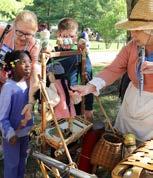
“I loved seeing how people lived back then,” Townsend says. “We saw how they survived, traveled on the Wabash River and how they stayed warm. There were no machines. They had to make all their own tools and hunt for food.”
Townsend says he enjoyed the field trip so much that he returned with his family the next day to experience more of the feast. He tried a buffalo burger and homemade root beer:
“I wish we could go every year.”

“My dad’s middle name is Tyler and his favorite breakfast food is bacon and eggs,” says Wea Ridge Elementary School first grader Paizleigh Myars at the school’s Tie-rific Guy Night. As she fills out an interview sheet, it’s clear how much she cherishes her time with her dad.
The interview activity gives first-grade students the opportunity to learn more about their fathers, uncles or other significant male figures in their lives. They also shoot hoops, play cornhole or read books together.
Parent Earl Emerick enjoyed spending time with his son, Evan, and meeting Evan’s classmates. The night also revealed some unexpected talents.
“I didn’t know my dad was so good at cornhole!” exclaimed Evan as he watched his father toss a bean bag through the air, landing a perfect shot. “I need to practice more at the Purdue tailgate so I can beat him!”
“The playful banter and bonding over a game of cornhole or playing Jenga are what this event is all about,” says teacher Holly Richard. “It’s great to see our students interacting with their favorite guys.”
As Ralph and Paizleigh wrap up their interviews, Paizleigh melted hearts when sharing her favorite thing to do with her dad: “Cuddling him.”
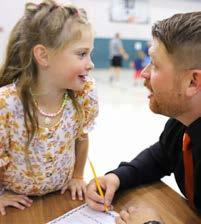
“Snow cones, get your snow cones here,” calls Payton Conard, a fifth grader enthusiastically promoting his team’s shaved ice as part of Burnett Creek Elementary School’s annual Market Day in November. During the school day, the gymnasium transformed into a bustling marketplace where students showcased and sold handmade creations such as keychains, desserts and holiday ornaments to fellow students, teachers and visiting families.
As part of an economics unit, students experience the challenges and excitement of running a business. “Students begin by pitching their ideas to their classmates and teachers with ‘Shark Tank’-style presentations, then get to work planning their business needs,” says teacher Tiffani Petit. “Students divide up the material lists, purchase supplies and bring everything to school to start creating.”
Payton’s team invested almost $100 on supplies, but the snow cones were one of the best-selling items. “I was surprised by how many people came to our stand. We made over $400!” says Payton. “If I could change anything, I would make sure we weren’t all doing the same job. Our hands got very cold from the ice, even though we wore gloves.”
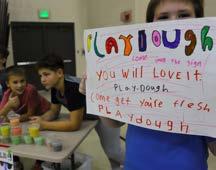
Student Molly Randall revealed that her team initially felt discouraged when customers walked past their table selling bath bombs. “That rejection hurt at first, but then other kids started coming in and they wanted our product.” Despite the slow start, the team’s business venture netted $86.
After repaying their investors (parents), most of the funds help offset the cost of their annual trip to Chicago, with the remainder donated to charity.
Market Day was not only a chance to earn profits but also a lesson in perseverance and teamwork. “Sometimes things don’t sell the way you want them to, but the more time you put into it, the more you get out of it,” reflected Tessa Bechler, whose team created keychains and ornaments. Whether mastering marketing strategies or handling customer feedback, students walked away with real-world insights that will likely stick with them.
For one day, Wea Ridge Middle School eighth graders traded their backpacks for briefcases, stepping into adult roles with jobs, families and budgets to balance. Their destination? Junior Achievement’s Finance Park, a simulation that brings real-world financial decision making to life.
Their journey follows several weeks of lessons in the classroom on career development, taxes and personal finance.
“This experience was fun and gave me a much better understanding of how to manage money when I get older,” shared eighth grader McKinley Werner. “Discovering the cost of everything per month was very mind-blowing. You’d think a family of four going out to a fast-food restaurant would be cheaper than cooking at home, but then you’re wrong. A family of four would pay around $55 per visit compared to just $20 for an at-home meal.”
Student Sophie Dunaway was assigned the role of a single mom of two children. She says buying groceries was a challenge: “I had to make the hard choice of going with the generic brand over the name brand because the name brand was out of my budget.”
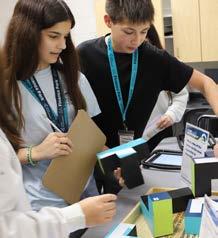
“It surprised me how much we spend on essential things like groceries, utilities and more,” adds student Weston Casselberry.
Finance Park isn’t just an exercise in math; it’s a glimpse into the complexities of financial independence and planning for the future. As McKinley put it, “A lot of this information I hope to keep with me and use in real life because it will be needed.”
“Over 1,000 kids get diagnosed with childhood cancer every day and we want to help those kids get the help they need. We need your help!”

Beginning with those words, Dayton Elementary School second grader R.J. Guzman, his voice a mix of excitement and determination, faces a video camera sharing details about the school’s annual Lemonade Stand. The December event marks the culmination of an economics unit where students learn how businesses operate and the impact of giving back to the community. A portion of the money raised goes to Alex’s Lemonade Stand Foundation which funds research to find better treatments and cures for childhood cancer.
The foundation is named for Alexandra Scott, a four-year-old Pennsylvania girl with adrenal-gland cancer who set up a lemonade stand in her yard to raise money for childhood cancer research. By the time she passed away at age eight in 2004, she had helped raise over $1 million.
Students take on various roles to ensure Dayton Elementary’s fundraising success. R.J. served as an advertiser, while classmates like Kennedy Kervin took on other key responsibilities. “I liked being a greeter because I got to say hi to everyone,” says Kennedy. “But it was also nerve-wracking to stand in front of everyone as they came into the cafeteria.”
Students, teachers, parents and community members flooded the cafeteria as students worked to pour lemonade, hand out sweet treats and collect donations. In all, 430 cups of lemonade and dozens of desserts were sold, raising more than $2,200 for the cause.
Beyond the impressive amount raised, the event delivered valuable lessons. “I learned about childhood cancer and that there are different kinds of cancer,” Kennedy shared.
The annual Lemonade Stand not only reinforced lessons in economics but also fostered empathy, showing students how their efforts can make a difference in the lives of others.
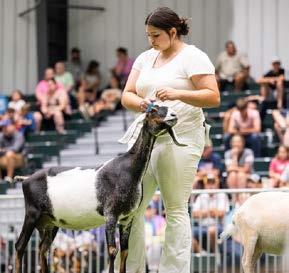
Sophomore Chloe Pyrcioch’s school days are not at all typical. Instead of heading to a traditional classroom, she starts her morning caring for her herd of dairy goats—overseeing their nutrition, breeding and registry maintenance—before diving into her coursework at Tippecanoe Online Academy (TOA).
Chloe is one of more than 90 students enrolled in TOA, an online learning program through Tippecanoe School Corporation. The program partners with Arizona State University to offer high-quality flexible courses while ensuring students receive guidance from full-time TSC teachers and learning-success coaches. This structure allows Chloe to balance her academics with her passion for raising and showing goats.
“I love the flexibility TOA gives me,” Chloe says. “I can focus on my schoolwork and still have time to take care of my animals, which is something really important to me.”
Beyond her farm responsibilities, Chloe stays connected with hands-on learning opportunities.
TOA students can take in-person classes at the Greater Lafayette Career Academy, participate in extracurricular activities like 4-H, or gain real-world experience through part-time jobs.
TOA is currently enrolling students in grades 9-12 for the 2025-26 school year online at toa.tsc.k12.in.us. As a free, public online school open to all Indiana residents, it provides students with the flexibility to design their education around their goals and interests—just like Chloe has.
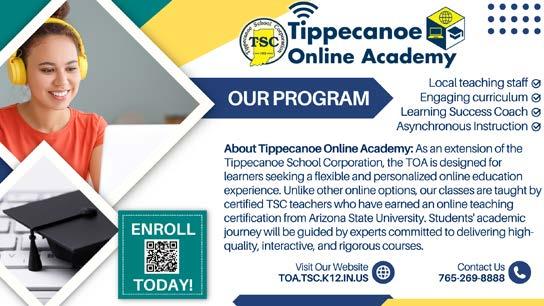
The funds to educate our 13,823 students are estimated to come from these sources in the 2025 calendar year:
31.64 % Local property taxes
60.19 % State revenue
2.07 % Bank and excise taxes
6.10 % Other revenues
The Education Fund comprises 58.8% of our annual budget, approximately $112.5 million for 2025. It allows for instructional expenses that include salary and benefits for teachers, paraprofessionals, principals, among other school instructional staff. In addition, this fund pays for supplies, staff development expenses and instructional equipment. The Education Fund is almost entirely supported by the State of Indiana (97.8%). The balance revenue comes from miscellaneous sources (2.2%)
The Operations fund comprises 21.9% of our annual budget, approximately $41.9 million for 2025. It allows for operational expenses that include salary and benefits for custodians, bus drivers, maintenance workers, among other school operational staff. In addition, this fund covers utility expenses, maintenance and repairs, building renovations, bus and vehicle replacements, as well as other operational costs. Revenues for the Operations Fund comes from local property taxes (72.0%), excise and financial institution taxes (4.7%), and other miscellaneous revenues (23.3%).
The Debt Service Fund comprises 19.3% of our annual budget, approximately $36.8 million. It provides for the repayment of school corporation debts. Revenues for the Debt Service Fund come from local property taxes (93.9%). The balance of the fund’s revenue comes from excise and financial institution taxes (6.1%).


For year 2024, payable 2025
Here’s how the TSC compares to other area school corporations for 2024 tax rates:
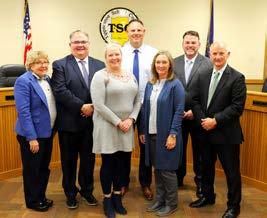
The TSC Board of School Trustees meeting schedule can be found at tscschools.com under About/Board of Trustees.
Email: tscboardmembers@tscschools.com
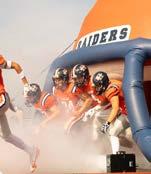
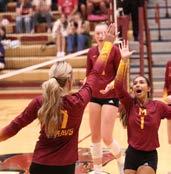
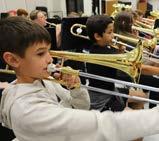
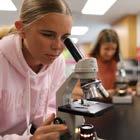
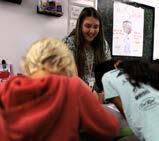
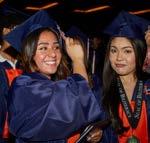
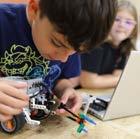
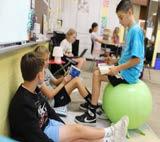
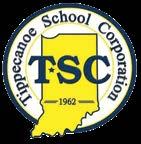
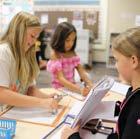
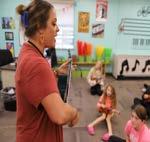
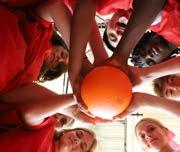
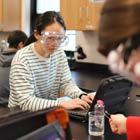
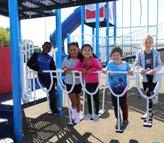

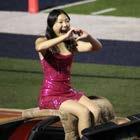
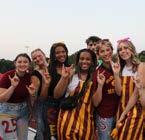

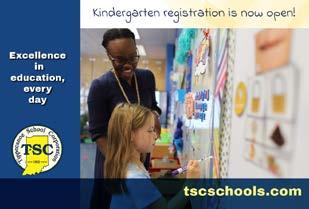
The TSC provides residents living within our attendance area, who are 62 and older, with complementary VIP passes to all TSC-sponsored events, except athletic tournaments.
To request a pass, visit TSC Administrative Offices, 21 Elston Road, Lafayette, 8 a.m. - 4 p.m., weekdays, or call 765-474-2481 to make an appointment.
The TSC has a mobile app, TSC2Go, that provides a convenient option for patrons to stay informed of activities happening throughout the TSC. The app is available in both the Apple App Store and Google Play Store.
TSC sends all school delays and closings through the app. Please visit the TSC2Go information page on our website, tscschools.com, to get signed up.